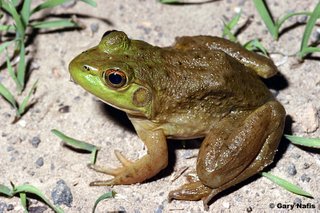
Saturday, November 25, 2006



At this point you should already have some facts that have to do with the life cycle of a frog. This second website will be useful when it comes to picking out the rest of your facts. While you go through this website remember to write down which facts on frogs you would like to use for your own presentation. Also, don’t forget you will be helping take care of some tadpoles/frogs so you need to have common knowledge on how to do so.
Click here to go to website number 2

Once you have learned the life cycle of frogs, where frogs come from, where they live, what they eat and other interesting facts about them you are going to put together a presentation.
Your presentation should include the following:
- 10-15 interesting facts that have to do with frogs. 3-5 of your facts need to be specifically on the life cycle of frogs.
- 1 Poster board that contains those 10-15 facts as well as 5-7 pictures.
- Your presentation should be 2-3 minutes long. You will use your poster to help guide your presentation. You should discuss most or all of the things you have chosen to put onto your poster.
Once we have finished listening to all the presentations put together by you and your classmates we will be receiving a fish tank full of tadpoles. We will watch as these tadpoles turn into frogs. After researching and learning about the life cycle of tadpoles and frogs it will be interesting to watch the process occur in our classroom! Once we have several frogs we will take a field trip to a near by stream and set them free!

Teacher’s Guide
The intended audiences of this web quest are third and fourth graders. At this level students are capable of these reading materials as well as the tasks they are asked to complete. After viewing the instructions students will be able to demonstrate what they learned through the project that they create.
- Students will learn the life cycle of frogs.
- Students will learn many different facts on frogs and their habitats.
- Students will learn how to take care of such amphibians in their possession.
- Students will learn how to put together a small yet challenging presentation of the facts they gathered and share with the class.
To be successful throughout this project students need to know how to use the internet. Also, students should be fairly good readers, not for the quality of reading but the quantity.
The students will have two hours a week for two weeks to complete the assignment, so a total of four hours on the computer is necessary.
Very good work: Would consist of including all the facts and pictures maybe even more. Also, elaboration on those facts and detailed pictures for the posters displays time and effort. Detailed work, time, and effort into creating a great presentation and poster will show. You will be able to tell that the student rehearsed their presentation, and knew what they would be talking about before hand.